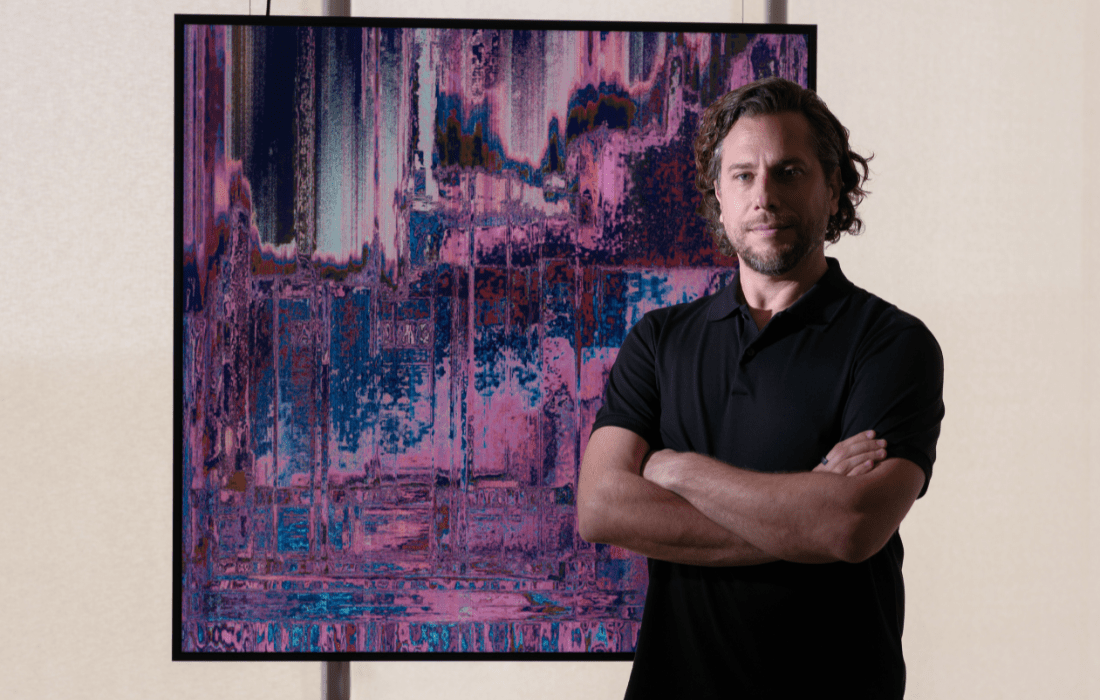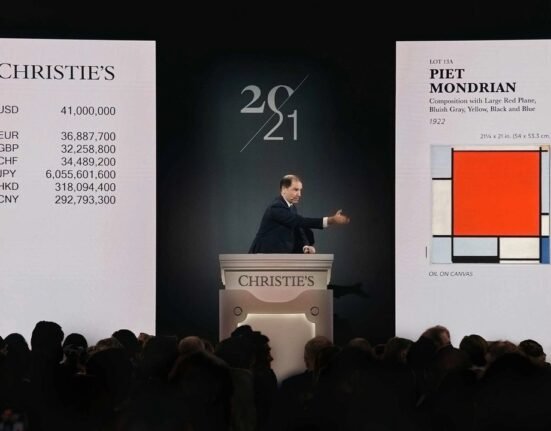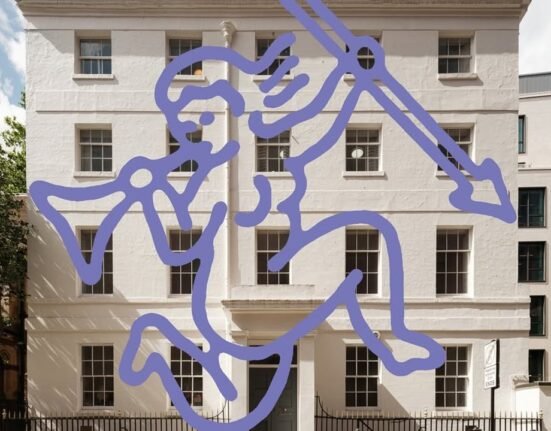
Angelo Sotira knows something about digital art revolutions. In 2000, he co-founded DeviantArt, the online social platform that helped a generation of artists find audiences—and each other—long before the idea of “Web3” was anything more than a dorm-room thought experiment. Twenty-four years and one tech exit later, he’s back with a new mission: to elevate digital art not just as a creative movement but as a collectible one. Last month, Sotira (né Sotiracopoulos) unveiled Layer, a hybrid platform and high-end display purpose-built for code-based art that operates as a turnkey collection for those serious about bringing generative works into their homes.
At Layer’s core is a mission to solve one of the biggest challenges to generative art appreciation: its presentation. Code-based generative works—e.g., Refik Anadol’s Unsupervised, part of MoMA’s permanent collection—evolve continuously, responding to data, time of day or user interaction. While the marketplace is increasingly populated with digital art frames, from Samsung’s Frame TV to Meural’s Canvas and Muse Frame, Layer is making an unapologetic appeal to the top of the market at $22,000. Justifying the hefty price tag is the fact that unlike much of what’s on the market, it’s not just another framed monitor pulling files from a mobile phone library or digital wallet. Along with serious screen resolution, it has a powerful dedicated GPU designed to render dynamic code-based artworks with zero compression loss in real time. It’s also pretty damn sleek, housed as it is in milled aluminum. On LinkedIn, tech entrepreneur Derek Labian described Layer as a “digital canvas that’s more like a high-end computer but has the industrial design and look of the most polished Apple product.”
Currently, Layer comes preloaded with work by 100 artists, including Casey Reas, Zach Lieberman and Rik Oostenbroek, selected from over 100,000 reviewed by a curatorial team boasting more than a century of combined experience. To make it sustainable, artists are compensated through a subscription model that pays royalties based on how long each work is displayed. Observer caught up with Sotira to learn more about who Layer is for, the company’s curatorial strategy and what it will take for broader audiences to accept digitally native art as “real art.”
Who is the Layer collector? Are you targeting crypto-native buyers or traditional collectors new to digital art?
Our collector is anyone drawn to living with an evolving curation of digital art—works created by many of the world’s leading digital artists and brought into the home with intention. It’s for any family that wants to bring home an education about the digital arts, to learn and experience artworks made through code-based, node-based and ultra-resolution pieces in disciplines like moving macro photography of chemical reactions or melding paint and ink. Digital art expresses itself in countless ways—the adventure is endless, and Layer makes it possible to participate in the journey with dedication. Today, this opportunity is available only to Founding Members and Exhibiting partners who will help bring Layer to life one Layer Canvas at a time. Layer offers a seamless way to engage with the digital art world, making it possible for collectors of all backgrounds to experience and support groundbreaking artists in an entirely new format.
Do you see Layer playing in legitimizing digital art for a broader, possibly more skeptical audience?
Yes! This is a great question because this is the heartfelt purpose of Layer. We have often thought that the beauty and potential of the medium felt trapped underneath countless poor determinations for how it should be accessed. So, yes! We see Layer playing a meaningful role in legitimizing digital art for a broader—and sometimes more skeptical—audience. We achieve this through a simple perspective at the root of our thinking; what design would enable this medium to be accepted in the finest of spaces and contexts. How should it behave, how should it meet a light condition or a gloomy day? What works stand the test of time in life? What object would I invite into my intimate spaces that could deliver digital art without raising an eyebrow?
One of the biggest barriers to widespread appreciation of digital art has been the lack of a thoughtful, dedicated medium for experiencing it. Layer changes that by offering a platform and canvas designed specifically for digital works. By bringing museum-quality experiences into everyday spaces and compensating artists through direct royalties, we’re helping shift perceptions of digital art to it being something everlasting and of great significance.


What does it mean to design a display that meets the standards of both artists and collectors? What does Layer do that’s different from a standard monitor?
Designing a display that meets the standards of both artists and collectors means honoring the integrity of the artwork while delivering an experience worthy of a museum-grade representation for digital art. With Layer Canvas, every detail was considered—from ultra-high resolution and P3 color to true black and a powerful GPU, which allows the entire medium of generative art to run natively for the first time in an integrated canvas. Layer was engineered solely for digital art. It supports complex generative works in real time, operates in complete silence and features a curatorial platform that intelligently sequences art based on the conditions of your space, the time of day and what it learns with time. You can interject—but you don’t need to.
You describe Layer as “museum-quality.” What does that mean technically—how does it compare to other digital art display platforms like Infinite Objects or MetaSill?
Layer was designed from the ground up from first principles in a project we call Layer Grade. What is the ultimate destination for the very best possible way to see digital art? One example: we covered CIE 1931 color space—the relationship between the visible spectrum and human color vision. There are many colors seen by the human eye on the real body of a beautiful bird that cannot be reproduced by any screen technology today. We then used the Layer Grade standard to produce the Layer Canvas. What is the very best technology available at each decision point in the world today? The Layer Canvas is a state-of-the-art experience and includes ultra resolution, P3 color, ultra-low reflectance, true black and a powerful GPU. We believe we’ve set a new bar for how digital art should be displayed.


LAYER is launching with original work by 100 artists. What was your curatorial strategy in choosing those names—was it about legacy, innovation or both?
The process for us always begins with our design philosophy for Layer: “less is moving.” Our curatorial strategy celebrates minimalism and simplicity whilst accentuating mood and emotion. The entire experience of Layer is one we hope heralds beauty and restraint. The artists and works chosen are at the avant-garde of digital with attitude and conviction. Graphic and compositional at one time soft and enveloping, and at others, cut loose with grit and edge. We’re pushing into the future of digital art with artists who have deep reputations and roots. Beauty and restraint. We want to honor the pioneers who helped shape the generative art movement and those who have taken their respective moving art mediums to a fine art audience. At the heart of it, we want to celebrate works that we think elevate digital art in the hearts and minds of a broader, more skeptical audience.
Where do you think digital art display is headed in the next five years? And what steps are you taking to ensure Layer doesn’t become obsolete?
Layer is a curation, an editorialized media player and the Layer Canvas. We will continue to develop our curation with artists we believe are timeless. We will continue to develop our software platform—our team has extraordinary consumer technology experience and deeply enjoys the journey of delighting our customers. Our Layer Grade standard is nowhere near possible today, so our Layer Canvas will continue its development journey through the years, maintaining its status as state-of-the-art. This is an all-out love affair.
More Arts interviews








